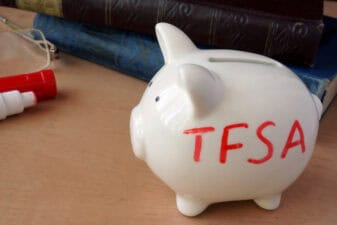Hands down, the Registered Retirement Savings Plan (RRSP) is one of the best retirement accounts in Canada and possibly the world. That’s not an exaggeration. With a contribution space up to 18% of your earned income (or $29,210 for 2022, whichever is less), not to mention immense tax benefits, the RRSP can help you sock away some serious cash.
But RRSPs aren’t reserved just for those with traditional retirement plans. If you’re looking to retire earlier than 65, or if you’re following the F.I.R.E. movement (Financial Independence, Retire Early), an RRSP could be the most efficient saving vehicle for you. Yes, even more so than the RRSP’s sister account, the TFSA.
Let’s take a look at why you should use an RRSP if you’re thinking about retiring early.
More contribution space
Perhaps the number reason to choose an RRSP over a TFSA is to get more contribution space. Let’s be real — if you’re looking to retire early, you’ll need all the contribution space you can get.
With an RRSP, you can contribute up to 18% of your previous year’s earned income, or $29,210 (for 2022), whichever is less. For instance, if you made $100,000 last year, then you could contribute a maximum of $18,000 into your RRSP.
Your TFSA has contribution space, too, though depending on how much income you make, it could be significantly less. For 2022, you can contribute a maximum of $6,000 to your TFSA. The good thing about TFSAs — your space rolls over. So, if you’ve never opened a TFSA, and you were 18 or older in 2009 (when the TFSA was created) you could have a total of $81,500 right now.
In that case, it might make more sense to sock a tonne cash into your TFSA, especially if you have $81,500 unused space. But before you do that, let’s talk about the next reason you should choose an RRSP first: taxes.
Tax deductions
Both RRSPs and TFSAs have the benefit of tax deferrals. That means whatever gains you make in your RRSP or TFSA, whether it’s through stocks or mutual funds, won’t incur a capital gains tax. Your money will keep growing and growing and growing, and you won’t have to pay a dollar in taxes.
At least, not yet. With the RRSP, you contribute before-tax dollars, meaning you’ll pay some taxes when you withdraw money in retirement. The amount you pay depends on your marginal tax rate at the time of withdrawal. Ideally, you won’t be making as much income in retirement as you are now, which will put you in a lower tax bracket. As such, you’ll pay less in taxes on withdrawals — much less than what you would have paid had you not contributed the money.
When you withdraw money from a TFSA, however, you won’t pay taxes in retirement. You use after-tax dollars, so you’ve already paid taxes on your contributions. This gives the TFSA a leg-up on the RRSP. But the RRSP bites back: though you might pay taxes in retirement, the CRA allows you to deduct your RRSP contributions from your taxable income.
That’s huge. Contributing to your RRSP could knock you down into a lower tax bracket, which will help you save an immense amount on taxes. For instance, if you made $100,000 last year, you would have technically fallen into the 26% tax bracket for 2021 (though not the tax bracket for 2022). But if you contributed 18% of your earned income, or $18,000, you could drop your taxable income to $82,000. That would bring you down to the 20.5% tax bracket, helping you save on taxes.
Here’s where you could get really savvy: by saving on taxes, the CRA might give you a tax refund. And what should you do with that tax refund? You guessed it: invest it in your RRSP. That’s the beauty of having an effective tax strategy.
Can you use both the TFSA and the RRSP?
Yes, of course. In fact, if you’re going to retire early, you probably should use both.
The good thing about the TFSA — you don’t have to pay taxes on withdrawals. The bad thing, of course, is that you could contribute a maximum of $81,500. Unless you invested that in stocks that grew your contributions 10-fold, that’s not going to be enough to retire.
In addition to RRSPs and TFSAs, you’ll probably want to open a non-registered retirement account. With these accounts, you don’t have strict contribution limits, though you don’t have tax benefits either. You’ll pay capital gains taxes on your investment gains. But if you’re going to retire early, this might be the price you have to pay.


